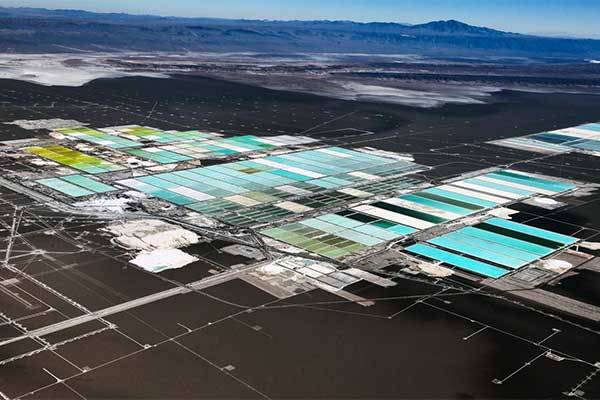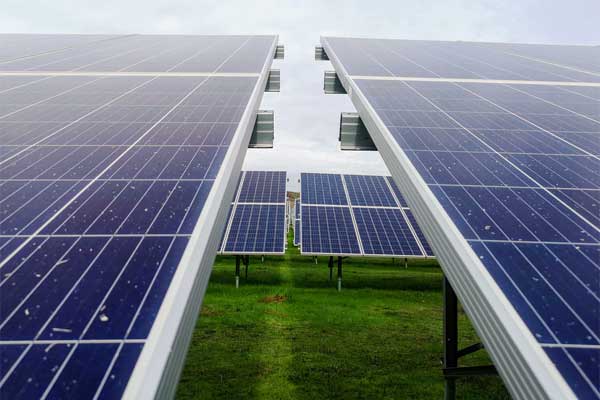- Lithium is an essential element for the rechargeable battery market.
- The U.S. Geological Survey (USGS) estimates that batteries constitute 65% of the end-use market for lithium (USGS 2020).
- This study's finding could have major implications on how to optimize lithium production at each stage of the process, which would result in more environmentally friendly products, particularly battery electric vehicles.
An important new study by researchers at the U.S. Department of Energy’s (DOE) Argonne National Laboratory has yielded critical fresh insights into the lithium production process and how it relates to long-term environmental sustainability, particularly in the area of transportation with batteries and electric vehicles.
The paper, “Energy, Greenhouse Gas, and Water Life Cycle Analysis of Lithium Carbonate and Lithium Hydroxide Monohydrate from Brine and Ore Resources and Their Use in Lithium-Ion Battery Cathodes and Lithium-Ion Batteries,” in the journal Resources, Conservation & Recycling, was the result of a unique collaboration with SQM, a Chilean company that is one of the world’s biggest producers of lithium.
According to Argonne lifecycle analyst and lead author Jarod Kelly, the researchers — using operational data supplied by SQM — found that the sourcing of lithium, from both a process and location perspective, can strongly affect its associated environmental impacts.
“The results show that concentrated lithium brine and its related end products can vary significantly in energy consumption, greenhouse gas emissions, sulfur dioxide emissions and water consumption depending upon the resource allocation method used,” Kelly explained.
The researchers modelled brine-based lithium extracted from the Salar de Atacama, a large salt flat in northern Chile near the Andes Mountains. The lithium is naturally dried in large ponds to evaporate the water, concentrate the lithium, and remove impurities. Materials and energy are later added to produce lithium carbonate and lithium hydroxide. These two end products are shipped worldwide to battery cathode producers that process them into a variety of battery materials.
The study findings could have major implications for how to optimize lithium production at each stage of the process, which would result in more environmentally friendly products, particularly battery electric vehicles. The International Energy Agency predicts that demand for lithium may grow by as much as 40 times between 2020 and 2040, mainly due to global deployment of electric vehicles.
“Examination of current lithium production and the pursuit of future production, including from within the U.S., are critical to sustaining electric vehicle deployment,” said Michael Wang, director of the Systems Assessment Center at Argonne and a study co-author.
“This study establishes a baseline for current practices and shows us potential areas for improvement,” added Kelly. “With further research, it will be possible to use this information to help develop best practices for producing lithium in the most sustainable way.”
SQM initially approached Argonne last year about a collaboration in support of ambitious sustainability targets the company recently unveiled.
“According to our sustainability plan, we want to look more closely at carbon emissions, water consumption and energy consumption in our lithium products, and see how it affects the rest of the value chain,” said Veronica Gautier, SQM’s head of innovation. “This information will help us achieve our goal of being carbon neutral by 2030.”
The analysis will also help address an overarching question in the global trend toward the electrification of transportation with battery electric vehicles, Wang said.
“Often electrification is for the purpose of pursuing environmental sustainability. But we need to know more about lithium battery production before we can say we are truly on a sustainable path,” he said. “This study provides crucial insights into the electric mobility value chain.”
The formal analysis used Argonne’s open-source modelling tool, GREET (Greenhouse gases Regulated Emissions and Energy in Technologies), with detailed data and technical insight coming from SQM. In addition to the brine-based lithium extracted in Chile, the researchers augmented their data by modelling ore-based lithium extracted from spodumene ore in Western Australia.
Kelly said it was the first analysis of its kind to be based on such comprehensive data from an industrial partner. Gautier added that SQM was pleased that the study results were now publicly available and would help further global efforts toward ensuring responsible and sustainable lithium production.
“It is important for us to have full and complete transparency about how our process works, and we’re excited to leverage Argonne’s experience and expertise,” she said. “Sharing this information will have great educational value.”
—-
Publication Referenced in the Article:
Jarod C. Kelly, Michael Wang, Qiang Dai, Olumide Winjobi. Energy, greenhouse gas, and water life cycle analysis of lithium carbonate and lithium hydroxide monohydrate from brine and ore resources and their use in lithium-ion battery cathodes and lithium-ion batteries. Resources, Conservation and Recycling, 2021; 174: 105762 DOI: 10.1016/j.resconrec.2021.105762











Comments